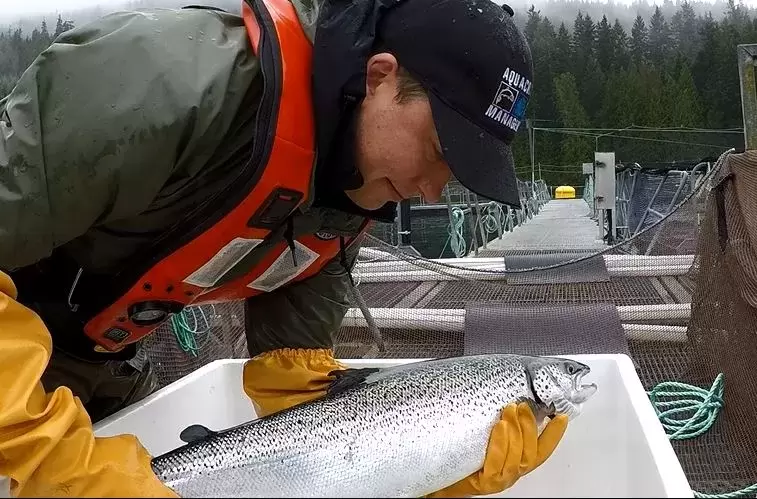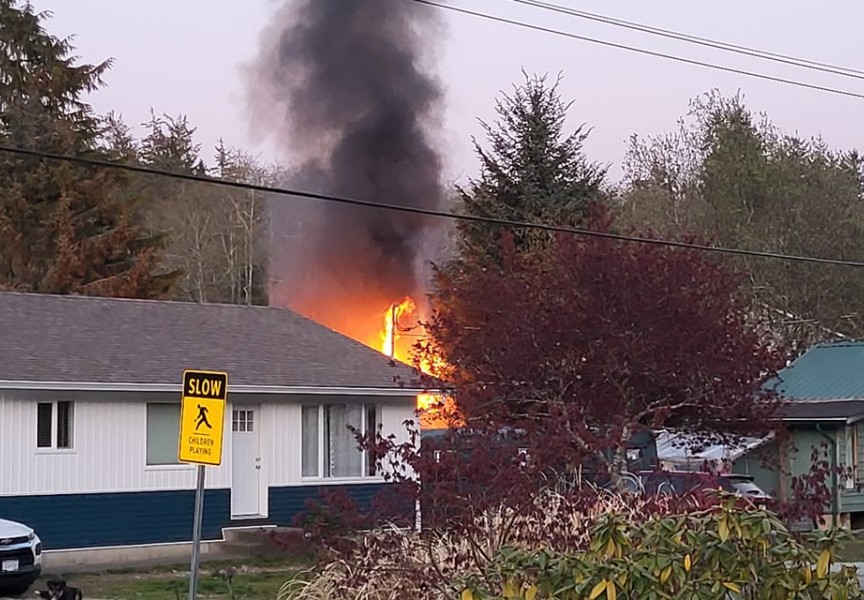Clayoquot Sound’s largest aquaculture operator has been warned by Ahousaht to improve its practices in the First Nation’s territory, according to an open letter being published by Cermaq Canada.
Posted in the June 20 edition of the Ha-Shilth-Sa and The Tofino-Ucluelet Westerly News earlier this month, the open letter apologizes for the high levels of sea lice that were found in farmed Atlantic salmon at some Cermaq sites last year and this spring. Cermaq operates in Ahousaht territory under an agreement with the First Nation that includes employment benefits and sustainable handling of its farms.
“We have been put on notice by the nation to do better in our management of sea lice, and will meet this expectation,” wrote Managing Director David Kiemele in Cermaq Canada’s open letter.
Sea lice can be found in the skin and mucous of salmon, a parasite that rarely kills adults but can be fatal to juvenile fish. Although the pest is also found in wild fish, many believe that the higher density of salmon in fish farms allows the parasite to spread more easily.
Cermaq’s sea lice problems began in 2018 when fish in some of its net pens in Clayoquot Sound were found to exceed limits set by Fisheries and Oceans Canada. The DFO’s threshold is an average of three motiles per fish, which is a louse capable of moving from the salmon host. Cermaq’s Fortune Channel site exceeded this limit by as much as three times, leading the company to announce in August that the farm northeast of Tofino would be closed until late 2019, and that salmon from the net pen would be “euthanized”.
“These fish were in ill health from high plankton counts, which had impacted their gill and overall health, and we knew the fish at this site were not going to recover and would continue to be an attractant for sea lice,” wrote Kiemele in the company’s published letter.
High levels of sea lice were also detected in other fish farms Cermaq manages in Clayoquot Sound. The company depopulated some of these sites, while treating others with hydrogen peroxide. In a letter to the region’s Clayoquot Salmon Roundtable, Kathleen Frisch, Cermaq’s fish health director, noted that last year’s outbreak was caused by a combination of “unusual” conditions that “created an ideal sea lice environment”.
“The weather was warm and dry, which led to warmer ocean temperatures and increased water salinity (increases in salt levels due to lack of fresh water from rain and run off),” she wrote. “Due to this, sea lice of all types (there are several species of sea lice) were seen in large quantities across the region, including areas well away from salmon farms.”
The lice problem continued in Ahousaht territory this year when elevated levels were detected in Cermaq’s Bare Bluff, Bedwell and Plover Point farms. In late May Plover Point tracked an average of 9.5 lice per fish.
The outbreak has fueled opposition to fish farms – both among those within Nuu-chah-nulth communities and the greater Canadian public. Environmental groups like Clayoquot Action argue that high sea lice counts in farmed fish have been a factor in the decline of wild salmon.
Although DFO scientists have not concluded on fish farms being a cause for the ongoing struggles of wild salmon, public concern has led the federal ministry to announce several measures this year to place tougher regulations in the industry, including the drafting of an Aquaculture Act in the House of Commons. The DFO’s latest announcement is to form an Advisory Committee on Aquaculture Science, with Canadian and international scientific participation, plus an Indigenous member.
“A successful aquaculture industry is important for feeding the world’s growing demand for seafood products without putting more pressure on wild stocks,” stated the federal department. “The use of best practices to ensure that the Canadian aquaculture industry is environmentally sustainable aligns with our government’s commitment to fostering economic growth while effectively protecting our environment.”
As wild salmon migrated past Cermaq’s net pens this spring, the three sites with elevated levels of sea lice were completely harvested in May and June in an effort to prevent further spread of the parasite. Cermaq raises its Atlantic salmon in land-based facilities for the first 18 months, and after sea lice forced the Fortune Channel farm closure last summer, the company began using a preventative treatment on all smolts that were transferred to the ocean from September 2018 to March 2019. Lufeneron is commonly used as a flee treatment for cats and dogs.
“The lufeneron treatments have been effective for the time period expected,” wrote Fisch in her letter to the Clayoquot Salmon Roundtable. “Lice numbers remain under the threshold for all smolts entered in the last year.”
In another measure to prevent a sea lice outbreak, Cermaq has invested $13.5 million into a treatment barge, custom built in the Netherlands for West Coast fish farms.
“The Hydrolicer barge uses ocean water to create both upward and downward water pressure changes to first loosen and then remove sea lice and eggs from our salmon,” wrote Kiemele. “This type of treatment is completely chemical free, filters out all the removed sea lice and eggs for disposal on land and allows us to treat for sea lice in a precautionary manner to continually keep our sea lice counts low.”
The Hydrolicer has arrived in Ahousaht territory, and is being prepared to begin operations this summer.







